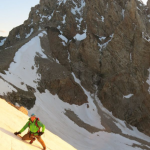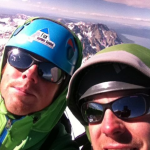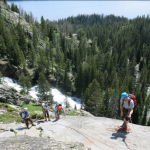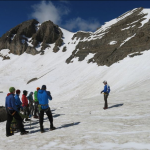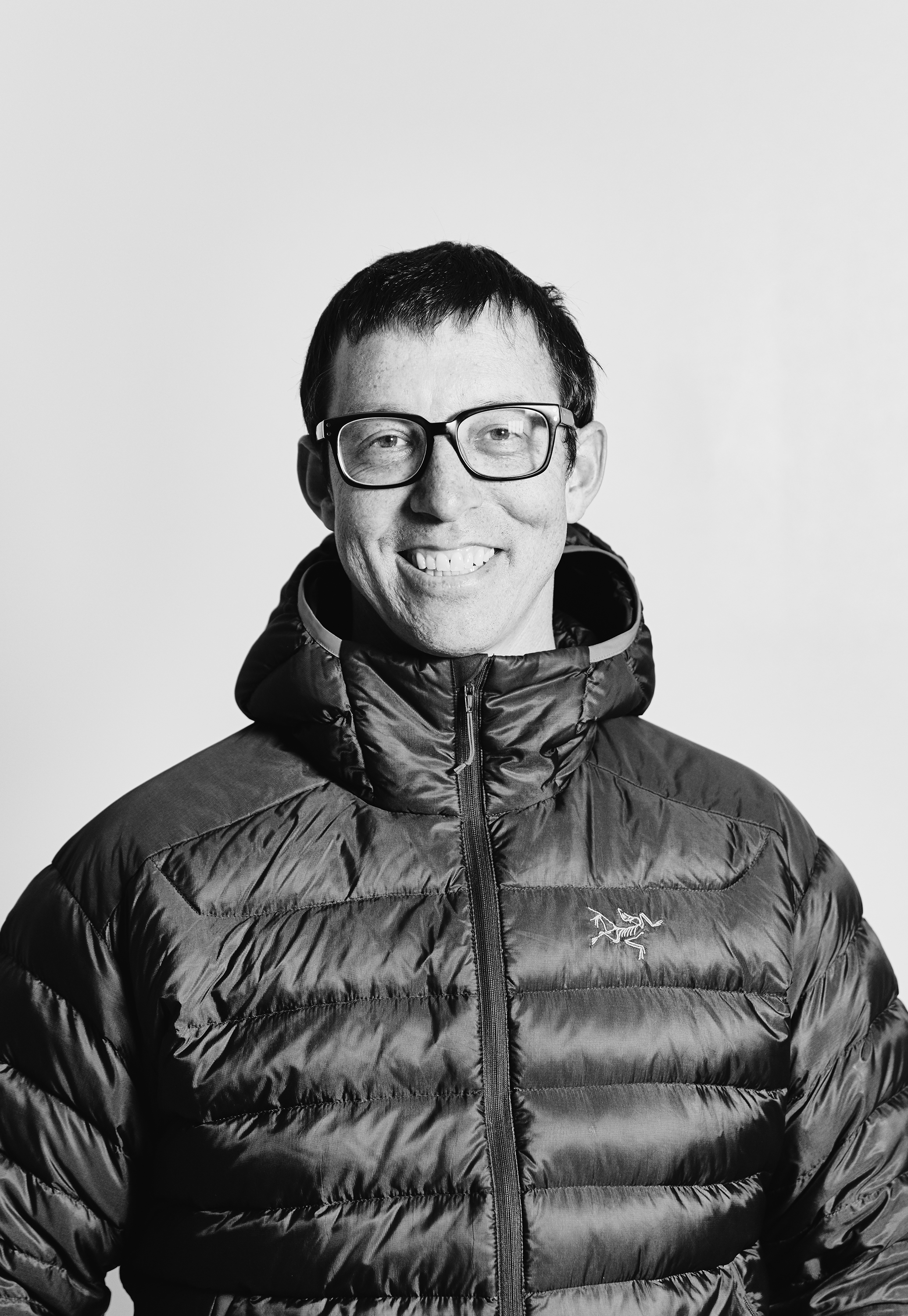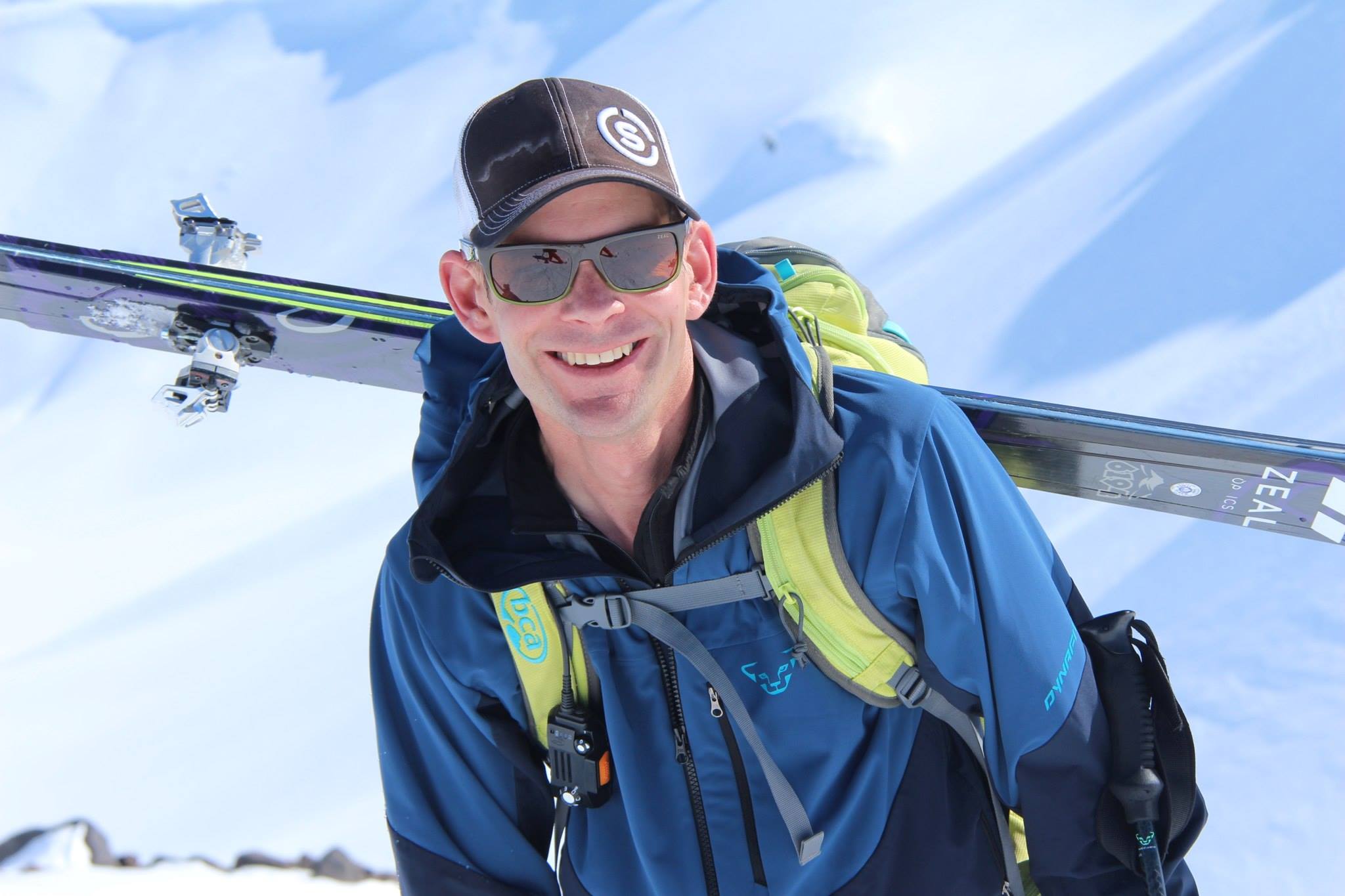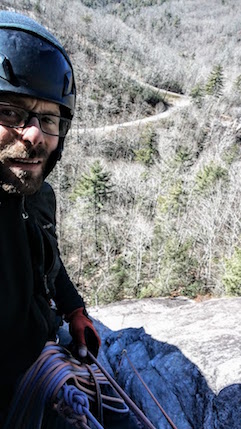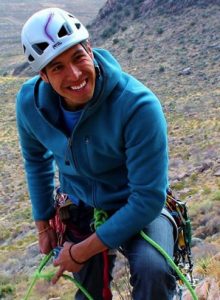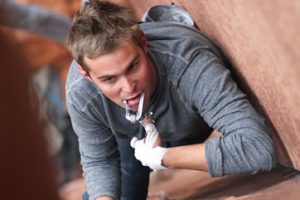OR Scholarship Recipient Ron Funderburke on His Alpine Guide Course
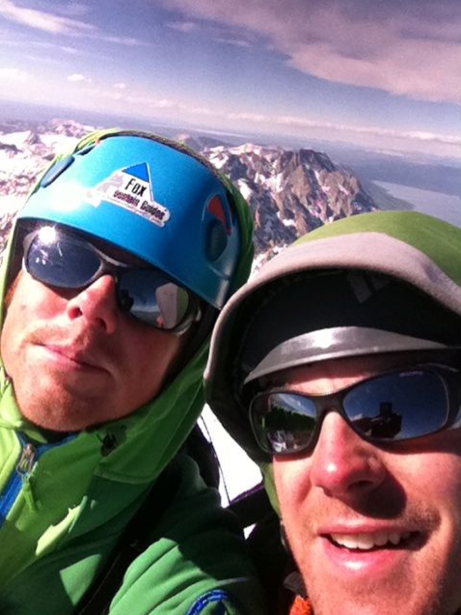 I left home on June 5th to attend the AMGA Alpine Guides Course.
I left home on June 5th to attend the AMGA Alpine Guides Course.
On June 5th, I went to Burke’s graduation (his son), and once I said goodbye, with some sadness, I had to drive to Charlotte to catch my flight. I caught up with Derek in Chicago, and we flew to Jackson, Wyo., together. Derek has blogged extensively about our time together, so another account seems a bit redundant. But, there are few things worth mentioning.
First, Derek did the kind of prep that all alpinists should do. He assembled a complete dossier on the Cathedral Traverse, including photos, retreat options, bivy options, etc. He did not have a time plan completed, and I did not bother to make one either. If we had, it would have been obvious that our summit of Teewinot came at an unacceptably late hour, if we intended to complete the traverse in a single push. I just reckoned we’d figure it out as we went, and take any of Derek’s well researched retreats if that contingency arose. Despite all of Derek’s research, we did not have adequate beta for climbing the traverse in those early season conditions, with so much ice and snow. That lesson should be heeded and never forgotten. It does no good to research a summer route that is currently buried in snow.
Altitude. I have never had any significant issues with altitude, other than fatigue. That was true on Teewinot and the Grand as well. But I did have a splitter damn headache on both climbs that is probably the result of altitude combined with low blood sugar and dehydration. Taking in adequate food and water is obviously important for me, if I really want to avoid getting those splitting headaches above 10,000 feet.
Alpine climbing. Most of alpine climbing, unfortunately, is hiking. I still find this annoyingly tedious. On Teewinot, we hiked straight up for nearly a mile, until we finally started soloing snow. If we had not done a little bit of rock and ridge climbing at the summit of Teewinot, and only about 200 feet of that, it would have been the most boring, laborious, and goofy summit I have ever climbed. Derek has noted that the climbing we did do was the result of a route finding error. But, honestly, if we had not climbed that stuff, I would have absolutely hated that long goofy boring snow hike. Is there not something redemptive to be felt in a proud summit, like the summit of Teewinot, simply for it’s own sake, regardless of the ardor, the exhilaration, or the challenges one faces on the way? I didn’t seem to find any. I felt like a bored rock and ice climber. The Petzl Ridge, by comparison, was a wonderful outing. We encountered free climbing challenges, we solved them, we climbed mixed rock and ice pitches, and snow and rock and we hit the summit of the Grand after 17 pitches of terrain. Now that was some fun. We stumbled back to the van late, ate snacks in the hotel, and ruminated on our endeavor. I’d climb like that any day of my life. I savored every inch.
I dropped Derek off at the airport after a good breakfast and then began to prepare myself, in earnest, for the course. I love the company of a good friend, and I am a social creature. But, I also enjoy solitude. I enjoy being alone, listening to radio or books, shopping and browsing shops, dining, packing and prepping equipment, cooking and eating, people watching, and watching sunrises and sunsets on the Teton Range. So, this time to myself, every day of the course, before and after, was some of the most restful and restorative time of the course.
On the 11th, the alpine guides course began at Jackson Hole Mountain Guides. We consolidated a lot of the classroom based curriculum into the first day to keep our field days in the field, including: navigation, equipment selection, route and trip planning, risk management, and alpine versus rock guiding. I learned, immediately, that my GPS and my map would not be very helpful for the course, and I resigned to dealing with that at a later date.
I also met my co-students and instructors on this first day. Rob Hess, course director, has been climbing and skiing in Jackson Hole for over 20 years. He’s the owner of the Jackson Hole Mountain Guides. Angela Hawse has been working for Exum, the AMGA, and a dozen other guide services and climbing schools for a generation. I’ve known Angela from AMGA meetings for nearly a decade, myself, but this would be the first time that I would really get to see her in action. Angela would leave the course at the mid point and Tom Hargis would take her place. I have also know Tom a long time, but this is the first time that I enjoyed the privilege of being his student. Lastly, Jeff Ward joined us from the north cascades, where he co-owns North Cascades Mountain Guides. I have heard second-hand praise of Jeff’s work in the AMGA alpine discipline, for a long time, but again this would be the first time that I would be his student.
I had eight co-students, all working professionals. This is the first time, in any of my course or exam experiences, when all of my co-students are active full-time guides. It was a real treat to work with that level of experiential insight. My co-students were insightful, quick to accept feedback, quick to see the application of a tool or technique, eager to try a new skill.
When we finally left the office we went out to the Jackson boulder to discuss anchors, knots and hitches, transitions. I finally saw the contextualized demonstration of the kinds of anchoring tactics I have often seen alpine guides employ in rock terrain. I am happy to report that the instinct I had then was proven correct. The techniques an alpine guide often employs are constrained and qualified by an imperative need to get off a long objective before adverse weather or darkness or avalanche conditions set in. Also, on a micro level, alpine terrain can be quite safe–beg ledges, summit ridges, nice deep snow platforms–so the stance can actually be credible incorporated into the consideration of the anchor. This combination of factors is rarely true in rock climbing, even really big rock climbing. Intermingling tactics from the two disciplines should be done with careful consideration.
On days two and three, we went out to Exum’s headquarters to discuss transitions from 3rd and 4th class terrain, to 5th class, to descent, and from one rope system to the next. Exum’s rock climbing school at hidden falls offers ideal terrain for teaching this kind of stuff. From any given anchor, it is quite easy to lower or rappel into a descent or ramp system. So, a team can select a given transition to focus on, and the terrain almost always opens up that transition to the student team.
On day four, we met at Teton Village and rode the gondola up to some out-of bounds skiing and snow school areas. It was a great venue to explore snow anchors, belaying glissading, crevasse rescue, rope team travel, shortroping on snow, and snow specific transitions. I forgot my sunglasses and had to purchase a pair through the gift shop. They were classy, for sure.
On day five, Z, Lyra, and I climbed the Symmetry Spire with Rob Hess. Z guided the approach, I guided the rock climbing, and Lyra guided most of the descent. I did not have much trouble with the rock guiding, but the thing that perplexes me about all these big mountain rock climbs is how any party really manages to distinguish one line from the next. It’s all just easy climbing on poor rock. The “line” in often just slightly easier climbing on slightly better rock. Lyra really opened up some learning opportunities for all of us on the descent. A 400ft lower that we all learned from, some belayed glissading and rock short roping, and finally Rob pulled the plug so we could make it to the ferry on time. We ran down a mountain, three miles in just under 30 minutes. It hurt. But we made it and didn’t have to walk.
On day six the same team guided ice and storm points. It was super fun to have such a big day on such and modestly difficult objective. No pitch was harder that 5.0 and we shortroped and shortpitched the entire approach, climb, and descent. It was a hoot. I would totally take my son on that climb.
For our overnight climb, we set off from the lupine meadows trailhead at 10am. We talked about pacing on long approaches, did some shortroping on snow and rock, and settled into Jackson Hole’s high camp for the evening. The next day, Z, Lyra, Jeff Ward and I climbed the Middle Teton. I guided the first three quarters of the snow, then Z took us to the summit, and Lyra, once again, worked the descent. Once again, with the need to wrap the day up looming, Lyra’s descent was cut short as we all down soloed the north ridge as fast as we could. We hit the Jackson Hole high camp just as the thunderstorms started booming, and made our long trudge back to the cars out of role.
We debriefed on the 9th day and let our bodies and gear dry out. I moved into the Motel 6, and got busy catching up on emails and the rest of my life.


